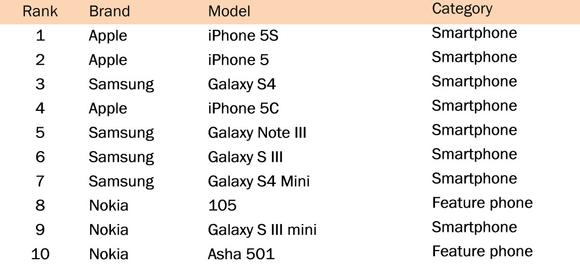Filed under: Investing
Low interest rates will undoubtedly leave investors seeking out the top dividend stocks of 2014. Let's look at three companies that, though they may not boast the highest dividend yields around, have substantially grown their payouts. All three stocks also boast price-to-earnings ratios close to or lower than that of the overall market.
Clorox's dividend yield recently hit 3%. The household-products company raised its dividend by 11% last year and by an average of more than 8% annually over the past five years. Even though the maker of Clorox, Pine-Sol, and Formula 409 may seem like an unexciting, slow-growing company, its stock has returned nearly 33% so far this year. The company boasts a strong brand portfolio that, in addition to its household cleaners, also includes Burt's Bees, Brita, Glad, Hidden Valley, and KC Masterpiece. Clorox is transitioning from a commodity-based business to one focused on higher-margin categories. As margins grow, it'll give the company more leeway to increase its already enticing dividend. Watch for Clorox to be among the ranks of the top dividend stocks of 2014.
Illinois Tool Works recently yielded 2.1%. The company raised its dividend more than 10% this year and has grown its dividend more than 6% on average annually over the past five years. In fact, Illinois Tool Works has raised its dividend for almost 40 consecutive years. And with a payout ratio of 31%, the company has plenty of room to continue to grow its dividend. Illinois Tool Works designs and manufactures products including zipper fasteners, cordless nail guns, and welding equipment. Innovation is what keeps this 102-year-old company going. Its major focus is creating pricing power by developing new or improved products in order to increase value to customers and avoid commodity-like products. For investors seeking the top dividend stocks of 2014, Illinois Tool Works is likely to craft satisfaction.
Cummins grew its dividend 25% last year and has nearly doubled its dividend within the past three years. The stock recently yielded 1.9%. With a payout ratio of 28%, the dividend still has lots of growth potential. Cummins designs, makes, and services diesel and natural-gas engines, power generation systems, and engine-related components. It has benefited from the one-two punch of a surge in supply of domestically produced natural gas and the push to more fuel efficiency in our big-rig trucks. As a result, trucking fleets are transitioning to natural gas for fuel. And Cummins has teamed up with Westport Innovations to provide the long-haul trucking industry with the capability to use liquefied natural gas as fuel. At a price-to-earnings ratio of 17, the stock appears undervalued. For investors interested in the top dividend stocks 2014 has to offer, the coming year looks like a boon for Cummins.
More top dividend stocks for 2014
Dividend stocks can make you rich. While they don't garner the notoriety of highflying growth stocks, they're also less likely to crash and burn. And over the long term, the compounding effect of their quarterly payouts, as well as their growth, adds up faster than most investors imagine. With this in mind, our analysts identified nine rock-solid dividend stocks in this free report. To discover the identities of these companies before the rest of the market catches on, you can download this valuable free report by simply clicking here now.
The article 3 Top Dividend Stocks of 2014 originally appeared on Fool.com.
Fool contributor Nicole Seghetti has no position in any stocks mentioned. Follow her on Twitter @NicoleSeghetti. The Motley Fool recommends Cummins, Illinois Tool Works, and Westport Innovations. The Motley Fool owns shares of Cummins and Westport Innovations. Try any of our Foolish newsletter services free for 30 days. We Fools may not all hold the same opinions, but we all believe that considering a diverse range of insights makes us better investors. The Motley Fool has a disclosure policy.Copyright © 1995 - 2013 The Motley Fool, LLC. All rights reserved. The Motley Fool has a disclosure policy.
Read | Permalink | Email this | Linking Blogs | Comments

















